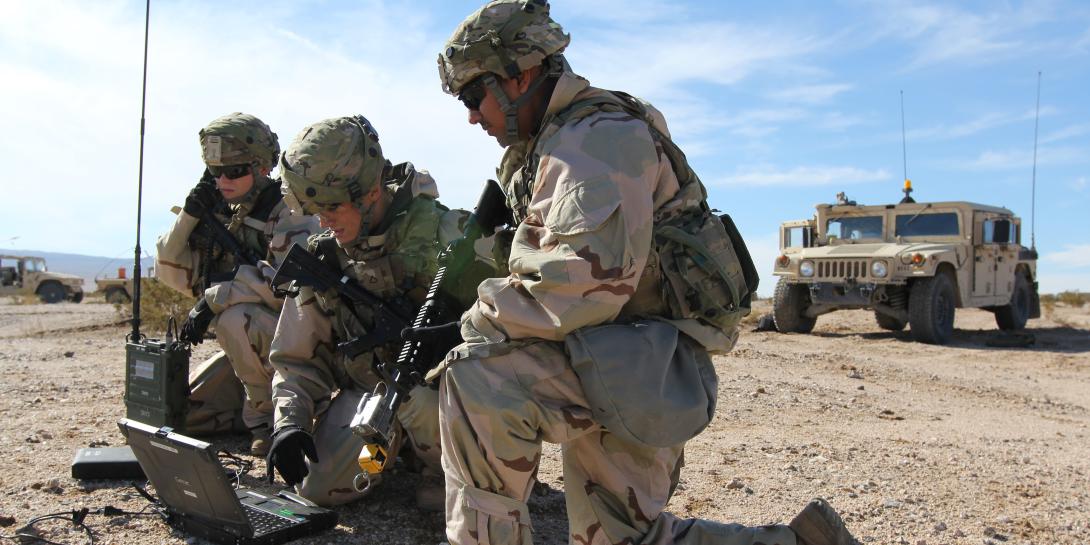Army Parses Cyber Training According to Skill and Needs
The U.S. Army is tailoring cyber training to fit customer needs and assets as it strives toward a data-centric culture. The goal is to enable all personnel to make as many data-based decisions as seamlessly as possible. And, a key to achieving that is to empower cultural changes that would open up personnel to adopt emerging technologies and data-driven processes.
Training is a key way of enabling those cultural changes, and the Army is focusing its training to accommodate the different levels of digital knowledge possessed by its users. Those with extensive knowledge can serve as leaders for other digital users. Similarly, personnel who do not need to access all the digital capabilities available need not receive the high level of training offered to some others.
These are some of the steps the Army is taking to build Army enterprise data literacy, which is at the core of a data-centric environment. Lt. Col. Kristin Saling, USA, acting director, people analytics, Office of the Assistant Secretary of the Army (Manpower & Reserve Affairs), outlined some of these efforts in an address to the AFCEA Small Business Committee in mid-January.
“We’re looking at this as a way to fully develop an ecosystem, in which our data talent can operate, where they can use their insights and transform those into action,” Col Saling stated.
The colonel offered that cyber training must take into account all levels of expertise, ranging from expert cybernauts to individuals who would be using data. The target base level of data understanding is represented by the data consumer, who applies the insights derived from analytical analyses to individual warfighting function and mission areas. The other three training levels are the data integrator, the data enabler and the data communicator. Their work drives the data to the consumer.
How those groups relate is a vital part of cyber training. “We really have to teach our data scientists how the Army thinks and our Army how to best consume what people are bringing them,” she said. “By bringing those groups together by good data visualization, good data storytelling, we communicate those insights that they are finding in the data a lot more effectively and in a way that the organization can take action on it.”
One of the first things the Army established was what needed to be covered. At the top of the list is what constitutes a good data question. And, its corollary is just what is data. A related need is to determine the types of data and why they are needed. All the elements of the Army must be taught to input data, and it must be quality data. Above all, personnel must be taught how the data can be made more readable.
Trust and ethics are important aspects that also must be covered in training, she continued. Understanding correlation and causality, along with spurious correlations, also are on the coverage list.
The types of analytics—descriptive, diagnostic, predictive and prescriptive—will be covered. This includes how much data to use on each of them, Col. Saling offered. She added that the Army has some good predictive models going on right now, and it is fielding a retention predictive model for the Army Predictive model. This would focus on attrition for the Army encompassing every individual on active duty, but the Army is not yet opening it up to lay audiences. She noted that it will not solve retention problems but rather is more like a fire warning system.
One key point is that users must be critical data consumers. Statistics and metrics can help those critiques, and personnel must be taught how they know what tells the right story. Data visualization is part of the methodology, as are conducting experiments and tests.
New and emerging technologies are key to data literacy, and the Army is ensuring that its personnel are on top of the latest developments. Its training will cover defining artificial intelligence, machine learning and deep learning, along with automation. This will help all levels of cyber users to adapt to oncoming changes in technologies and methodologies.
“We have a very supportive organization right now,” Col. Saling observed. “They are not standing up and trying to say, ‘Why do we need to know about this data stuff?’ They’re saying ‘Yes, I want a data-driven organization, I want to be data literate, teach me how,’ which is great.
“Now we just have to go and get the curriculum together and push it out to all the organizations,” she continued. “I think we’re doing that in a way that’s really exciting right now.”





Comments